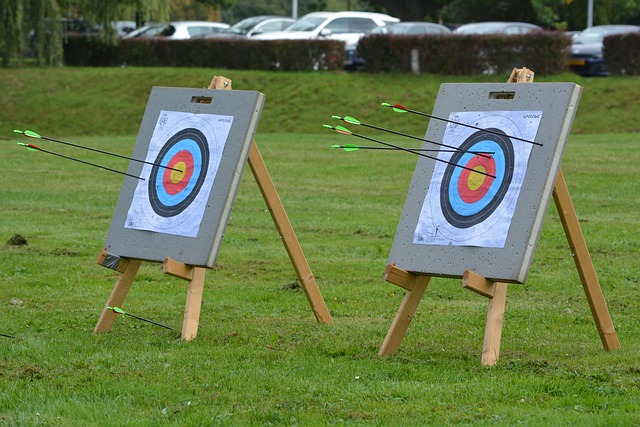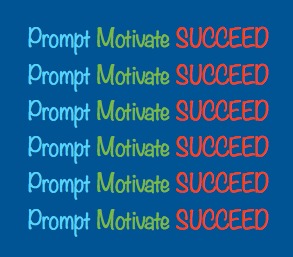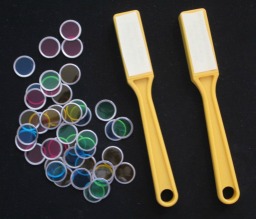- Home
- Teaching Strategies
Teaching Strategies for Autism: Tools to Help Your Child Succeed
Have you ever wondered if teaching strategies for autism are different from methods instructors use for regular students?
You might assume that they are, and if so, you are correct. Because children with autism suffer from difficulties that most regular kids never face. You can learn about these troubles in the articles I've linked to below.
If the prospect of teaching your child intimidates you, you're not alone. This is a common fear among parents; that same fear overwhelmed me when my oldest son was little.
I can only imagine that for many parents, the fear of failure can make them want to give up before they even start.
That's why I'm sharing with you the teaching strategies for autism that special education teachers learn to help children overcome the problems that are unique to this condition.

Check out the articles I've listed below. Some of these techniques could save hours of time and loads of frustration for you and your child.
And if one method doesn't work, try something else. I find that trial and error often leads to success.
I would encourage you to begin in spite of any fear that may be holding you back. The only true failure is to allow fear to win.
Increase Your Child's Chances of Success in Learning

Of all the teaching strategies for autism I've learned, goals may be the most important.
Ever get lost and try to find your way somewhere without a GPS or even without a map?
Goals are a lot like a GPS. They help you to know where you are going and they help you get there faster.
Goals give you direction and focus. Because of this, they dramatically increase your ability to succeed at whatever you are doing. This will give your child a huge advantage.
To find out how to write goals that can keep you focused on helping your child succeed, click or touch here.
A Technique That Works for Learning Just About Any Subject or Skill

Sometimes our kids need a hint, a clue, or a reminder when they get stuck during a lesson. How can we help?
Thankfully, there’s an effective technique that works for most if not all children with autism. Click or touch here to find out how you can help your child through just about any lesson while giving her a greater chance of success.
Techniques For Learning Just About Any Subject or Skill, Part 2

If you read the article at the link just above this section, you learned an important technique for helping your child with just about any lesson. But our kids can often come to rely on that help. That’s why it’s often best to pair that method with the technique I will show you in this article.
Understanding this concept and applying it during your child’s lessons can help him master new skills without relying on anyone else’s help.
How to Teach Complex or Multi-Step Tasks Using the Forward Chaining Method

Does teaching your child complex or multiple-step tasks seem next-to impossible? Some children have trouble learning a task that involves a series of steps.
Forward chaining can be helpful in teaching many types of skills, such as tying shoes, brushing teeth or doing the laundry. Click or touch here to learn how to teach your child a multi-step task.
Backward Chaining: Another Way to Teach Complex or Multi-Step Tasks

As you may know, no one technique works for every child.
That’s why we sometimes have to try different methods until we find what will help our kids succeed.
If you’ve tried forward chaining to teach your child a multi-step task and it didn’t work, or if trying something else appeals to you, you may want to learn about backward chaining. Click or touch here to find out how backward chaining works.
How to Motivate Your Child to Learn Any Subject or Skill

What can you do if your child just isn’t motivated to learn? Or what if s/he would rather do other things, especially when s/he is obsessed with something else?
Thankfully, there are proven, effective ways to motivate our kids to succeed. Click or touch here for a host of ideas on how you can make your child want to learn.
Techniques For Motivating Your Child to Learn, part 2

If you read the article at the link just above this section, you learned an effective way to motivate your child to learn.
This article dives deeper into this subject, showing you actual systems for motivating children with autism to learn just about any subject or skill. Click or touch here to learn more.
Generalization: Helping Your Child Apply New Skills to New Situations

Many children with autism have trouble applying to other situations the new knowledge or skills they have gained. For example, they may learn how to read words from flash cards, but then be unable to read them from a book.
Check out this article on generalization to discover how to help your child apply her new knowledge to other situations she may encounter.
How to Be Sure Your Child is Making Progress

You work hard to teach and train your child to learn a lot of things. At some point you'll need to know whether or how much she is making progress. This is where testing and quizzes come in. But how do you go about testing her?
Click or touch here to learn about several ways you can measure your child's progress.
Repetition
They say that repetition is the mother of learning, and I believe it. I know I need a good amount of repetition when I’m learning my Spanish. Our children will need LOTS of it as they learn new skills.
Patience is the key here. Expect that they will need lots of repetition. If we know this ahead of time, we will be less likely to become impatient.
Learn From An Expert Teacher

Chad Manis is a Language Arts teacher with many years of experience during which he learned about many highly effective teaching techniques. Many of his ideas can be great teaching strategies for autism, depending on how high functioning your child is.
My son isn't extremely high functioning, but there are many ideas I can use regarding organizing my teaching environment.
His article on Room Organization, like the rest of his website, is absolutely fantastic. You may already know that a highly structured environment is essential for our children with autism to learn and function well.
Check out his site. He has some great ideas that I believe will be of help to you.
Review These Teaching Strategies for Autism
My suggestion is to come back to this page once in a while to review these techniques. It can really help to be reminded about what you've learned.
Take the time to learn and review these teaching strategies for autism and you’ll be well-equipped to help your child move to the next level. It can make a big difference in how well your child learns and remembers new skills.
- Home
- Teaching Strategies
1. Teaching Reading to Your Child
2. Teaching Math to Children With Autism
3. Writing Help for Children With Autism
4. Speech Therapy for Autism: Ideas You Can Use at Home Every Day



New! Comments
Have your say about what you just read! Leave me a comment in the box below.